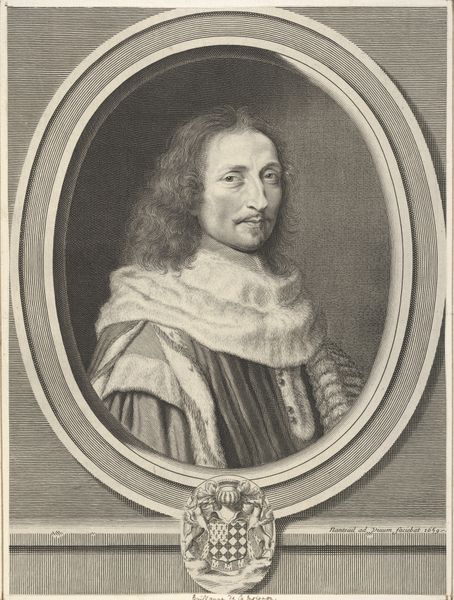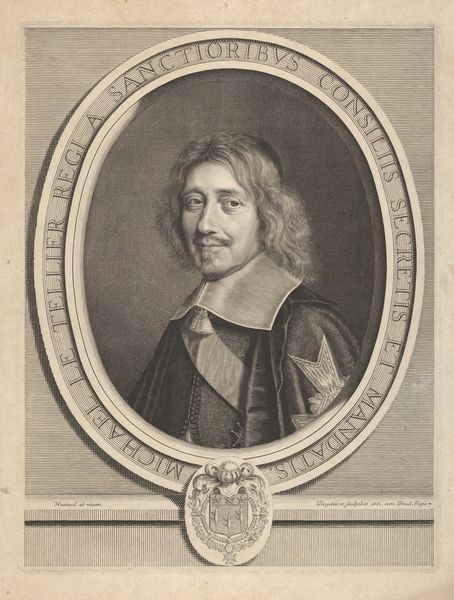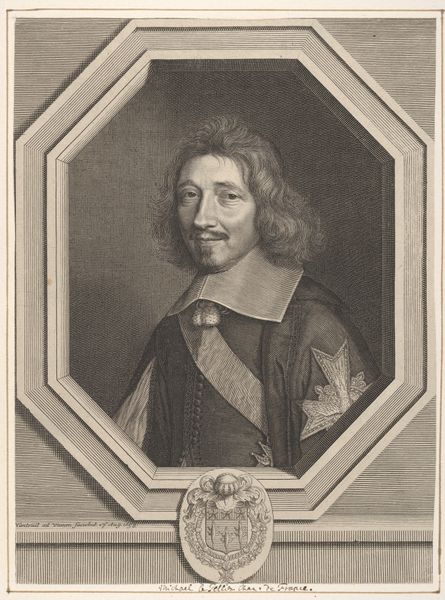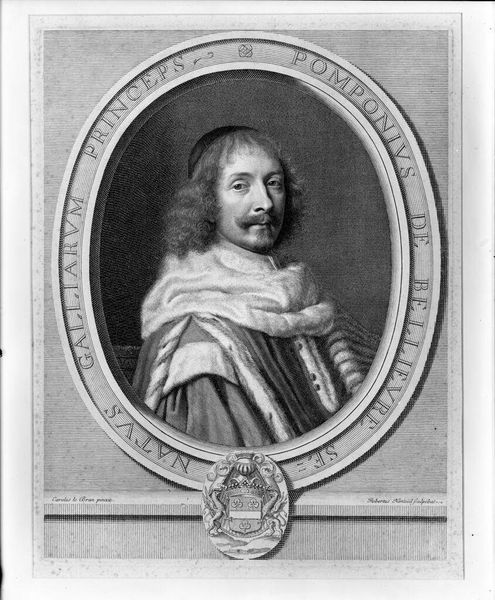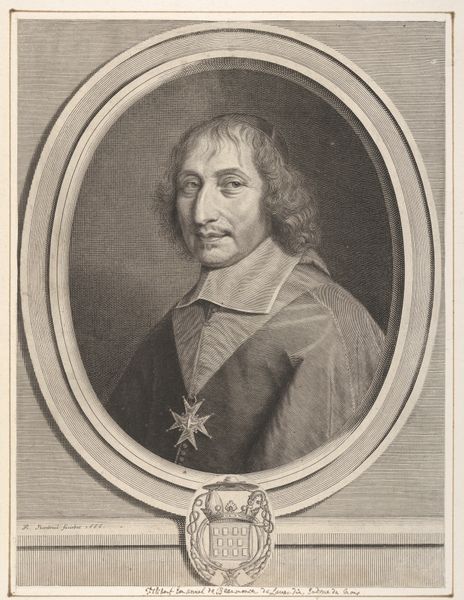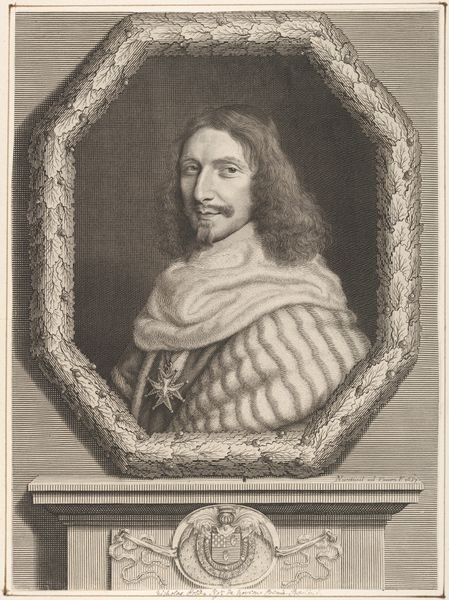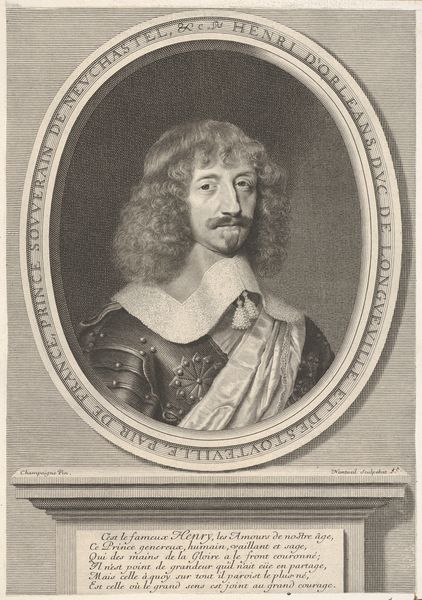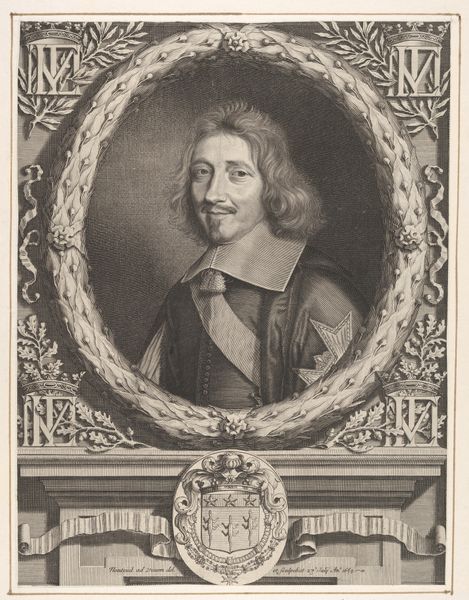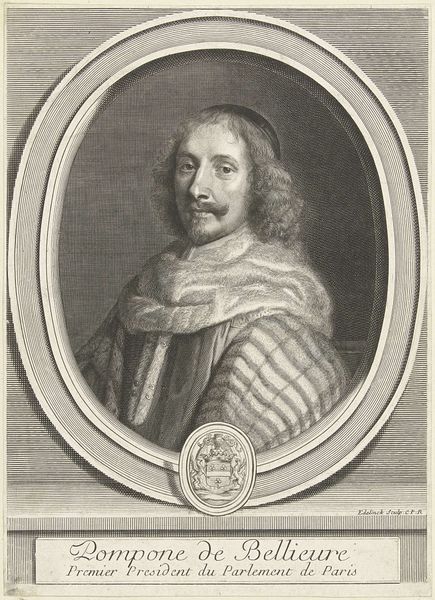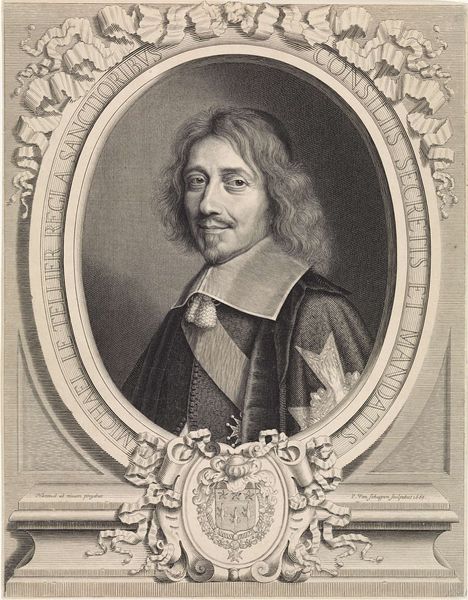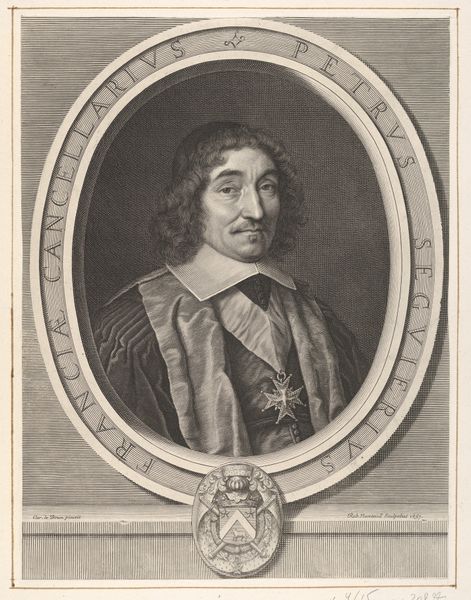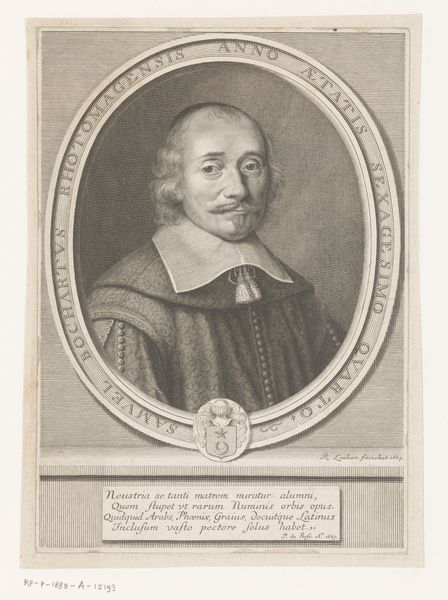
drawing, print, engraving
#
portrait
#
drawing
#
baroque
# print
#
engraving
Dimensions: Sheet: 13 × 10 1/16 in. (33 × 25.5 cm) Plate: 12 13/16 × 9 5/8 in. (32.5 × 24.5 cm)
Copyright: Public Domain
This is Robert Nanteuil’s portrait of Pompone II de Bellièvre, made with engraving on paper. Nanteuil was a master of this technique, using a tool called a burin to cut lines directly into a copper plate. Look closely, and you will notice the incredible detail he achieved. The density of the lines creates tone and shadow, giving the image a remarkable sense of depth. This wasn’t just a technical exercise. Printmaking in the 17th century was closely tied to social status. Engravings like this one helped to circulate images of important people, reinforcing their power and prestige. The very act of reproducing an image speaks to the subject’s importance. Also, consider the labor involved. Each line meticulously carved by hand, a testament to Nanteuil’s skill and patience. While we might think of printmaking as a way to democratize images, here it’s being used to uphold a social hierarchy. It reminds us that materials, making, and context are crucial to understanding the full meaning of any artwork, and challenges the distinction between fine art and craft.
Comments
No comments
Be the first to comment and join the conversation on the ultimate creative platform.

